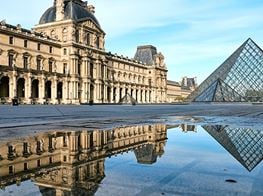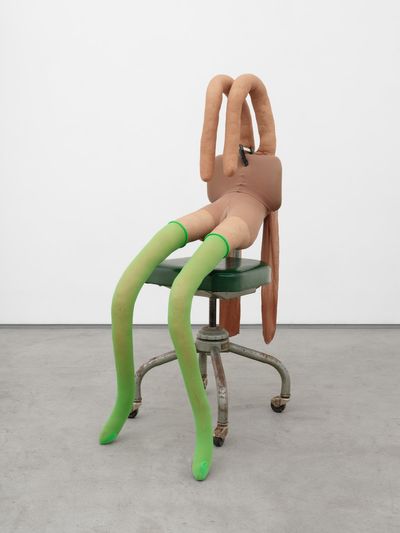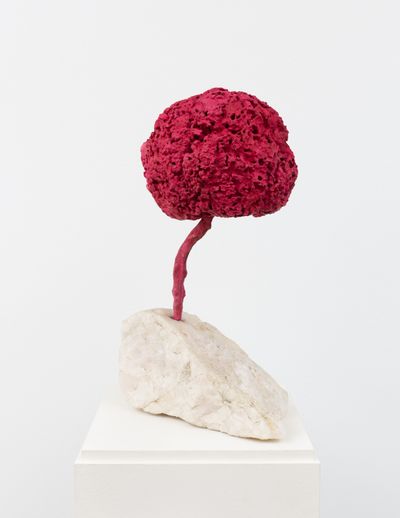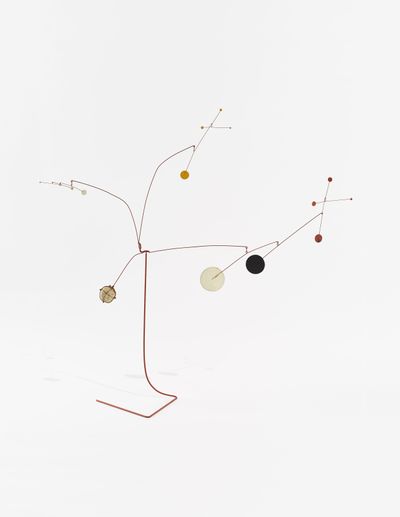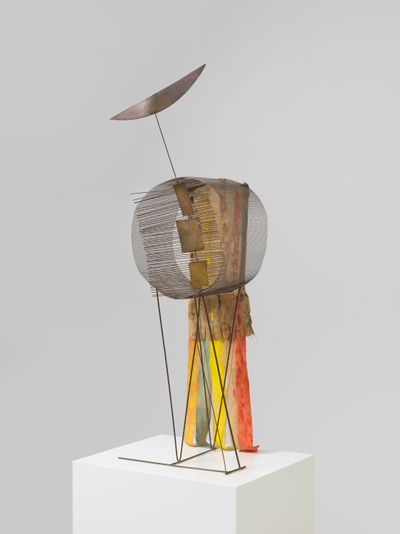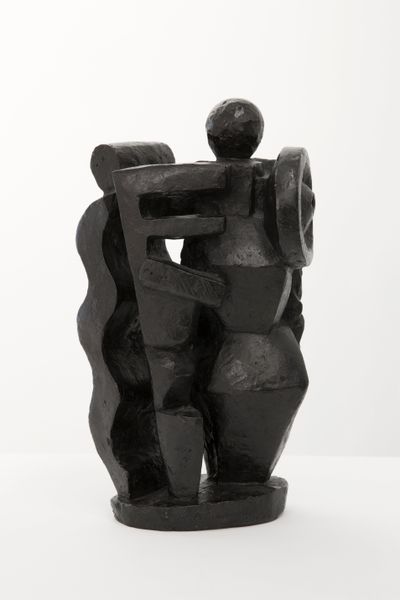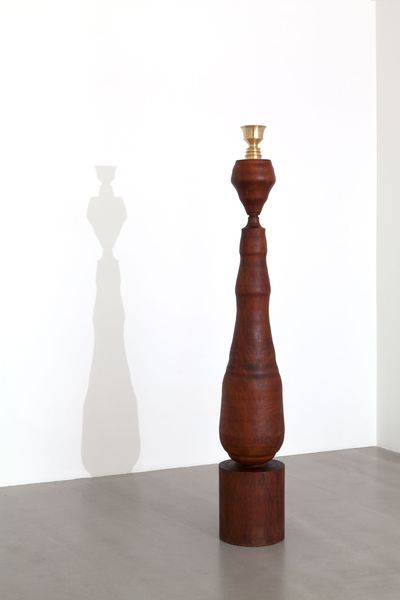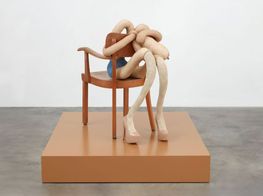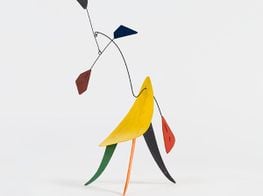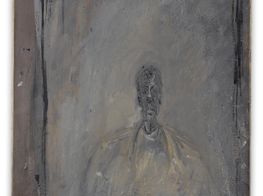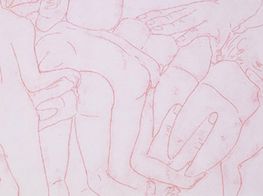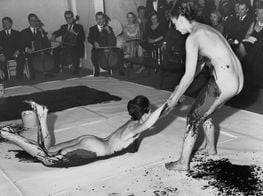
Paris+ par Art Basel:
Advisory's Top Sculptures
The inaugural edition of Paris+ par Art Basel arrives in the French capital from 20–23 October, bringing together 156 galleries from France and beyond within the Grand Palais Éphémère.
The calibre of sculpture at the fair is noticeable, with the works of modern masters presented alongside contemporary pioneers. You'll find outstanding sculptures by Alexander Calder showing with LGDR, a number of impressive Alberto Giacometti works offered by kamel mennour, and Exogenous Axis by the late Brazilian artist, Tunga in the booth of Luhring Augustine.
Learn about the Advisory team's top sculpture picks ahead of the opening.
Seeing a work by Sarah Lucas in a Sadie Coles HQ preview is always a welcome sight.
Lucas' iconic 'Bunny' series was first shown in the artist's 1997 solo exhibition, The Law—the gallery's second show since opening. Eight of the 'Bunny' sculptures, each titled Bunny Gets Snookered (followed by a number in sequential order), were arranged around and atop a snooker table.
The series, which has since expanded to include Bunny Gets Snookered #13 showing in Paris+, has featured in numerous institutional exhibitions globally.
Constructed with coloured stockings and found objects, and contorted in various positions, Lucas' 'Bunny' series came to stand as a challenge to gender stereotypes, sexuality, and notions of femininity. The term 'snookered' playfully references the situation in which someone is prevented from scoring or completing a course of action.
Yves Klein at LGDR
LGDR will present a selection of monumental sculptures for Paris+, including Yves Klein's Sculpture éponge rose sans titre (1959).
Klein became known for his investigative attitude and explorations into colour. A pioneer of performance art, Klein remains one of the most revolutionary figures in post-war art.
Sculpture éponge rose sans titre superbly highlights Klein's unique ability to blend painting and sculpture. Featuring a sponge sprouting from a natural stone base, Klein's elegant work evokes the form of a rose undergoing a transformative state of growth.
Saturated with crimson-coloured pigment, the natural sponge is far removed from its past oceanic life. Klein's textural, structurally complex sculpture reminds viewers of the artist's fascination with the natural world.
Sculpture éponge rose sans titre will be presented in LGDR's booth alongside works by Alexander Calder, Diego Giacometti, and Fausto Melotti.
Caged Stone and Fourteen Dots is one of three works by Alexander Calder in LGDR's Paris+ presentation.
Paris was where Calder spent a significant part of his life: during his formative years in the city, the artist rubbed shoulders with leading Modernists of the time including Piet Mondrian and Jean Arp.
This show-stopping work is particularly impressive for the way it balances the delicacy of Calder's late-1930s sculptures, with the kinetic harmony of his standing mobiles which he began producing in the early 1940s.
Around this time, Calder began receiving increasing recognition for his boundary-defying sculptures. In 1943, New York's Museum of Modern Art hosted a critically-acclaimed solo exhibition of the artist's work. More recently, MoMA held Modern from the Start (2021)—a major retrospective of Calder's practice.
As the title of this particular work suggests, the sculpture features a stone encased in a red wire 'cage', which acts as an anchor for the constellation of suspended dots. Caged Stone and Fourteen Dots beautifully encapsulates the seamless harmony and structural complexity for which Calder became known.
Fausto Melotti's sculptures hold a whimsical brilliance and material delicacy—a welcome break from the big, bold canvases that have recently dominated art fairs and galleries.
Forging his practice in 1920s Milan, a city then host to Italy's avant-garde, Melotti began experimenting with new forms of abstraction through an exploration of both primary colours and geometric forms.
La zingara is an exquisite example of Melotti's brass work, seamlessly balancing geometry and representation with abstraction and narrative.
In 1986, the year of his death, Melotti was posthumously awarded the Golden Lion at the 42nd Venice Biennale in recognition of his artistic contributions.
Melotti's influence is reflected in the ever-growing market for his work since his death. Notably, in 2015, Il viaggio della luna sold at Christie's for a record price of €606,000.
Alberto Giacometti at kamel mennour
Composition is one of two fantastic Alberto Giacometti sculptures showing in kamel mennour's Paris+ presentation.
Speaking to Ocula Magazine, Founder Kamel Mennour explained, 'I am very excited to show a body of work by Alberto Giacometti representing two significant periods. He created Compositions (1927–1928) early in his career when he was very much inspired by late Cubism.'
The market for Giacometti's work shows no signs of slowing, often up there among the most-anticipated lots at auction. Next month, Giacometti's oil painting Caroline (1962), and painted bronze sculpture Trois hommes qui marchent (grand plateau) (1948/1952), will go on sale at Sotheby's.
While in Paris, lovers of Giacometti should also visit David Zwirner's Paris gallery, where the two-person exhibition of the artist and Fred Sandback, L'Objet Invisible: Giacometti / Sandback, runs until 29 October.
Tunga at Luhring Augustine
It may take fair-goers a moment to clock that Exogenous Axis takes its shape from the inverted silhouette of a female form—the brass top delineating the woman's face, while the wooden base manifests the body.
Exogenous Axis is one from of a series of works by the late Brazilian artist Tunga, with each sculpture varying in its material and tone—denoting the skin colour of the model.
Trained initially as an architect, Tunga was one of Brazil's leading artists whose practice encompassed spatial, conceptual, and baroque concerns.
Parisian audiences will be familiar with Tunga, whose monumental metal sculpture À la lumière des deux mondes (At the light of two worlds) (2005) was installed beneath the glass pyramid of the Musée du Louvre.
Main image: Alexander Calder, Caged Stone and Fourteen Dots (c. 1948). Sheet metal, wire, stone, rod, and paint. 92.7 x 86.4 x 25.4 cm. © Calder Foundation/Artists Rights Society (ARS), New York.

